The Black Mamba is one of four different species in the Dendroaspis genus. It is well-known as one of the most dangerous snake species in the world. However, people often vilify this nervous species.
In most cases, this snake avoids confrontation unless it is cornered or trapped. Read on to learn about the Black Mamba.
Description of the Black Mamba
Despite its name, this species is not truly black. Their scales are more of an olive green or grey color than black. They are very long and narrow-bodied snakes, with relatively narrow heads.
On average, adults measure about 8 or 9 ft. long. Some reports indicate that this species could reach or exceed 14 ft. in length. They generally weigh 3 or 4 lbs. on average.
Interesting Facts About the Black Mamba
People often misunderstand this highly venomous species. Learn more about what makes this snake unique below.
- Speed Slither – As an active predator, it is important for this snake to be able to outrun, or out-slither, its prey. In short distances, this species can reach speeds of 12.5 mph!
- Terrestrial Territory – These snakes spend most of their time on the ground, this makes them primarily terrestrial. However, they can and do climb into trees in pursuit of prey or while hunting.
- Lurking Lairs – This species spends most of its early mornings and late afternoons searching for prey. When it needs a break, it retreats to a favorite hollow tree or termite mound to hide. These snakes often use the same lair repeatedly.
- Macho Males – When mating season arrives, males wrestle with one another to impress females. The males stand up off the ground and wrap their necks together. Each male attempts to pin the other’s head to the ground.
Habitat of the Black Mamba
These snakes spend most of their time on the ground, but they live in a variety of different habitats, including forested regions. They prefer ecosystems with a variety of different hiding places, including rocky areas. Some of the different habitats that they occupy include forests, woodlands, grasslands, savannas, and more.
Distribution of the Black Mamba
This species lives in a few different regions of Africa. They live throughout much of central and eastern Africa. Their range in that area extends from Cameroon and Nigeria, to Eritrea, Somalia, Kenya, and Tanzania. Another pocket of population lives across southern Africa, including South Africa, Namibia, Botswana, Zimbabwe, and surrounding areas.
Diet of the Black Mamba
As a carnivore, this species eats other animals and does not feed on any plants. Their primary prey are rodents, including mice, rats, squirrels, hyraxes, and more. They also hunt birds, bats, bushbabies, and other small animals.
Their primary method of hunting is actively searching for and chasing down prey. After striking and injecting venom several times, they wait for their prey to die before eating it.
Black Mamba and Human Interaction
When possible, this snake tries to avoid humans at all costs. They do not live close to human habitation, and they avoid areas with lots of humans present. Even when they do cross paths, this reptile attempts to flee when possible.
However, when this snake feels cornered, trapped, or instigated, it is quite aggressive. It will strike multiple times and inject large amounts of venom. Sadly, interactions occur more frequently in areas where humans destroy its natural habitat. Despite habitat destruction, these snakes have stable populations and the IUCN lists them as Least Concern.
Domestication
Humans have not domesticated this reptile in any way.
Does the Black Mamba Make a Good Pet
No, this snake does not make a good pet. It has highly toxic venom that can kill a human with a single bite. DO NOT consider owning one of these reptiles as a pet.
Black Mamba Care
Zoos and research facilities keep these snakes to educate the public and collect venom. They use the venom collected to make antivenom. With antivenom, medical professionals can treat those who receive bites, preventing deaths.
The zoos house these snakes in large enclosures with a variety of branches and basking areas. They work to educate the public about the snakes. Zookeepers usually feed them rats and mice.
Behavior of the Black Mamba
Black Mambas are diurnal, and spend their days searching for food or basking in the sun. They live in remote areas and avoid human contact as much as possible. When they aren’t basking or hunting, they return to the same hiding places. Some favorite lairs include termite mounds, hollow logs, or even abandoned sheds or buildings.
Reproduction of the Black Mamba
When the breeding season arrives, the males wrestle one another to attract a female’s attention. After mating, the eggs develop within the female for 2 or 3 months before she lays them. The female finds a burrow or hollow log, and then abandons the eggs after laying.
Clutches generally contain between 6 and 17 eggs. It takes 2 or 3 months for the eggs to hatch, depending on the temperature. Once the eggs hatch the young receive no parental care and are fully independent and self-sufficient.

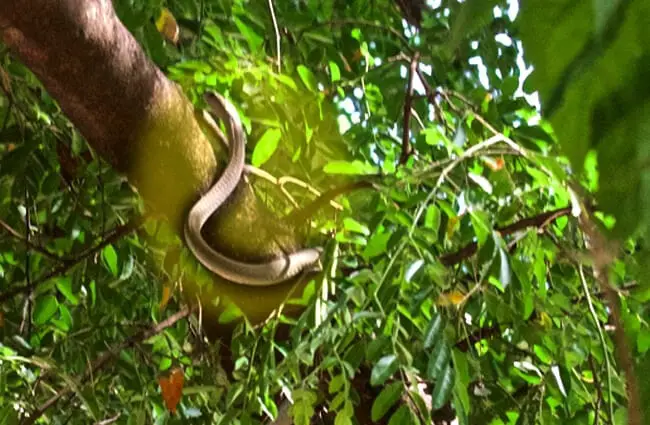


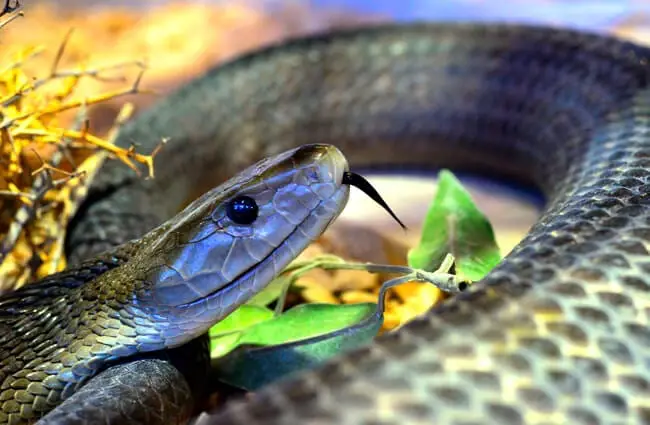
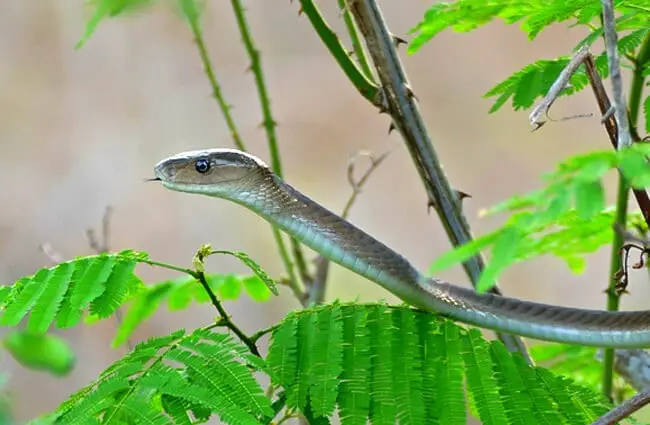
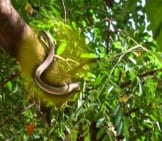


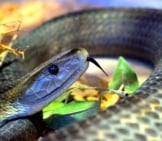
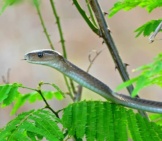
![Red Angus Closeup of a beautiful Red Angus cowPhoto by: U.S. Department of Agriculture [pubic domain]https://creativecommons.org/licenses/by/2.0/](https://animals.net/wp-content/uploads/2020/03/Red-Angus-4-238x178.jpg)












![Red Angus Closeup of a beautiful Red Angus cowPhoto by: U.S. Department of Agriculture [pubic domain]https://creativecommons.org/licenses/by/2.0/](https://animals.net/wp-content/uploads/2020/03/Red-Angus-4-100x75.jpg)

